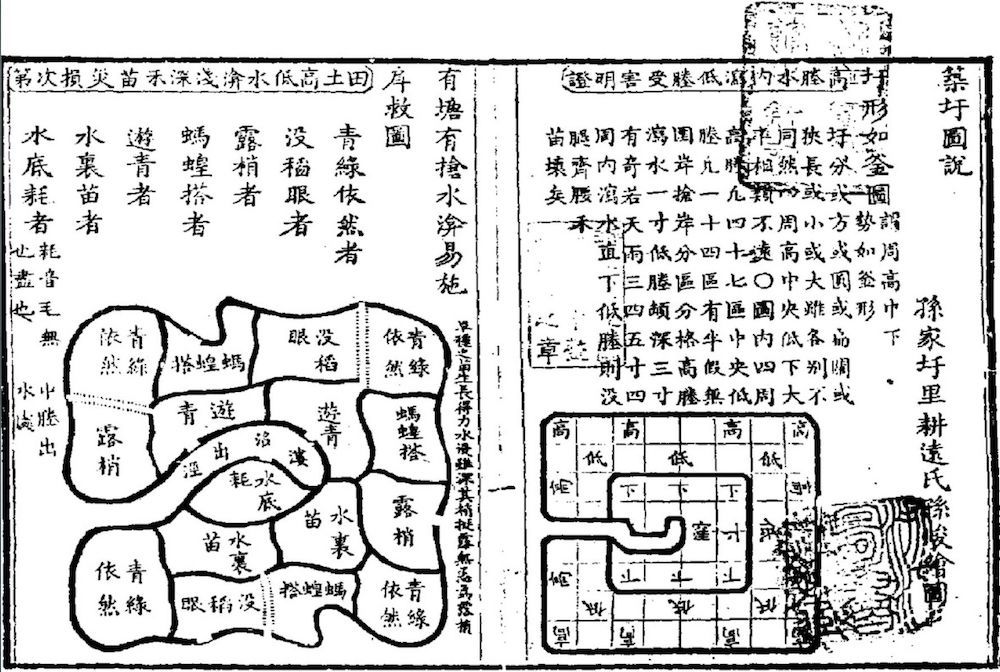Zhuwei tushuo 築圩圖說 "Illustrated account on lowland dykes" is a book written during the mid-Qing period 清 (1644-1911) by Sun Jun 孫峻 (fl. 1813), courtesy name Gengyuan 耕遠, from Qingpu 青浦 close to Shanghai.
The book highlights principles and methods in the building and repairing of dykes and banks, and warns against not caring enough for the construction of such means of embankment. The author point at the "six critical errors" (liu bu 六弊) in dyke building, such as a lack of physical and planning diligence or the phenomenon of "difficult to construct, but easy to destroy". He also mentions important aspects like financial calculation, including seeds, rent, and labour force.
The focus of the text is the construction of so-called "kettle-shaped dams" (fuxing wei 釜形圩). The author discerns between lowland dykes (tang'an 塘岸), circumvallation dykes (wei'an 圍岸), and support dykes (qiang'an 戧岸), and classifies fields into three types, namely such with low, middle, and high path dykes (chengtian 塍田) which allow to channel and drain off the irrigation water through different means. These paths are different to the usual raised paths leading through the fields (pan'an 畔岸).
 |
The higher paths (gao cheng 高塍, bold lines in the image) served as ridges to collect excess water from rain in separate areas, while the lower paths (di cheng 低塍) served as a barrier to excess water from below. The description says that the embankment may have any shape, but it was important that the outer ridges were higher than the centre of the field. The lower path includes 14 shallow-pit compartments (qu 區) having the lowest level, and only relatively low side ridges (wei'an 圍岸). |
The text is accompanied by 12 figures demonstrating the shape and topographical situation of embankments, dams, and dykes to ward off superfluous water from agricultural areas in the lowlands of Jiangsu, while at the same time providing sufficient water for irrigation.
Sun's brief book was finished in 1813. A modern edition was published in 1980 by the Nongye Press 農業出版社.